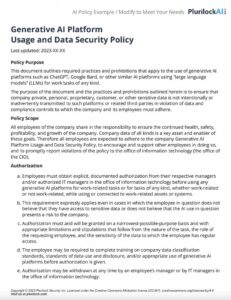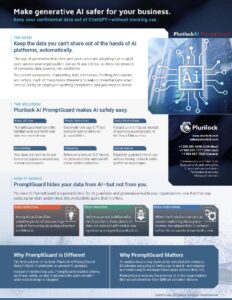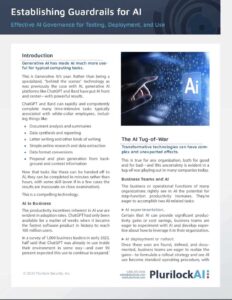User Carelessness in Cybersecurity: A Deep Dive
In the rapidly evolving landscape of cybersecurity, one critical factor consistently stands out as a vulnerability that cybercriminals relentlessly exploit: user carelessness. Despite the sophisticated tools, firewalls, and security measures put in place by organizations, it is often the actions or inactions of individuals that lead to security breaches and data compromises. This deep dive into user carelessness in cybersecurity will explore what it is, why it matters, and provide in-depth analysis of its importance in today’s digital world.
What is User Carelessness in Cybersecurity?
User carelessness, in the context of cybersecurity, refers to the unintentional or negligent actions taken by individuals that compromise the security of digital systems, networks, or data. It encompasses a wide range of behaviors and mistakes, from clicking on suspicious links and using weak passwords to oversharing personal information on social media and falling victim to phishing attacks. Essentially, it is the human factor in cybersecurity, and it often represents the weakest link in an organization’s security chain.
Common Examples of User Carelessness
- Weak Passwords: One of the most prevalent manifestations of user carelessness is the use of weak passwords. Many people still rely on easily guessable passwords such as “123456” or “password.” Others reuse the same password across multiple accounts, making it easier for hackers to gain unauthorized access.
- Clicking on Phishing Emails: Despite widespread awareness of phishing emails, users continue to click on malicious links or download infected attachments, leading to malware infections, data theft, or financial losses.
- Ignoring Software Updates: Failing to regularly update software, operating systems, and applications leaves vulnerabilities unpatched, making it easier for cybercriminals to exploit them.
- Oversharing on Social Media: Users often share personal information, including birthdates, locations, and details about their daily routines on social media platforms. This information can be leveraged by attackers for social engineering and targeted attacks.
- Using Public Wi-Fi Insecurely: Many users connect to public Wi-Fi networks without considering the risks. These networks can be hotspots for cybercriminals to intercept data or launch attacks.
Why User Carelessness Matters
User carelessness is not a new phenomenon, but its significance in the realm of cybersecurity has grown exponentially due to several factors.
1. Human Error is Inevitable
First and foremost, human error is an inherent aspect of human nature. No matter how well-educated or security-conscious individuals may be, everyone is susceptible to making mistakes or misjudgments. Unlike machines and security software, humans cannot be programmed to be infallible, and this vulnerability remains a constant challenge for cybersecurity.
2. The Rise of Social Engineering
User carelessness is a goldmine for cybercriminals, particularly those who engage in social engineering attacks. By exploiting human psychology, attackers manipulate individuals into revealing sensitive information or taking harmful actions. This includes tactics like phishing, where attackers craft convincing emails or messages that lure users into providing login credentials or downloading malware.
3. The Complexity of Modern Cyber Threats
Cyber threats have evolved to become highly sophisticated and multifaceted. From advanced persistent threats (APTs) to zero-day vulnerabilities, cybercriminals employ a wide array of techniques to breach defenses. However, even the most sophisticated attack can be undermined by a single careless click or a weak password.
4. The Interconnectedness of Digital Systems
In today’s interconnected world, the security of digital systems is intertwined. A single compromised user account within an organization can lead to a domino effect, jeopardizing the entire network and sensitive data. User carelessness has far-reaching consequences that can ripple through organizations and impact individuals, businesses, and even nations.
5. Regulatory and Legal Implications
In an era of increased data protection regulations, such as the European Union’s General Data Protection Regulation (GDPR) and the California Consumer Privacy Act (CCPA), user carelessness can result in significant legal and financial consequences for organizations. Failure to safeguard user data can lead to fines, lawsuits, and reputational damage.
The Importance of Addressing User Carelessness
Addressing user carelessness is not just a matter of improving cybersecurity practices; it is a fundamental imperative for organizations and individuals alike. Here’s an in-depth analysis of why it is so crucial:
1. Protecting Sensitive Data
Sensitive information, such as personal identifiable information (PII), financial data, and proprietary business information, is the lifeblood of many organizations. User carelessness can inadvertently expose this information to cybercriminals, leading to data breaches, identity theft, and financial losses. Protecting this data is not just a matter of compliance but a critical ethical and operational concern.
2. Safeguarding Reputations
A cybersecurity breach resulting from user carelessness can inflict severe damage to an organization’s reputation. Trust is hard to regain once lost, and customers and clients are less likely to do business with an entity that fails to protect their data. The fallout from a cybersecurity incident can include lost customers, revenue, and competitive advantage.
3. Reducing Financial Impact
Cyberattacks are costly. Beyond the immediate financial losses associated with a breach, organizations must contend with the expenses of incident response, legal fees, regulatory fines, and potential compensation to affected individuals. Preventing user carelessness can significantly reduce the financial impact of cyber incidents.
4. Complying with Regulations
Many industries are subject to stringent cybersecurity regulations that require organizations to take specific measures to protect user data. Failing to address user carelessness can result in non-compliance, leading to legal consequences and penalties.
5. Fostering a Culture of Security
Addressing user carelessness goes beyond technical solutions; it involves fostering a culture of security within an organization. This includes providing cybersecurity training and education to employees, creating policies and procedures, and encouraging a proactive approach to security.
6. Mitigating Insider Threats
User carelessness is not limited to external threats; it also plays a role in insider threats. Employees who do not adhere to security protocols can unintentionally or maliciously compromise an organization’s security. Mitigating user carelessness reduces the risk of insider threats.
Strategies to Address User Carelessness
Effectively addressing user carelessness in cybersecurity requires a multifaceted approach that combines technology, education, and a commitment to creating a security-conscious culture. Here are some strategies to consider:
1. User Education and Training
Invest in cybersecurity awareness training for employees and individuals. Teach them how to recognize phishing attempts, the importance of strong passwords, and the risks associated with public Wi-Fi. Regularly update training to keep users informed about the latest threats and best practices.
2. Implement Multi-Factor Authentication (MFA)
MFA adds an additional layer of security by requiring users to provide multiple forms of verification before accessing an account or system. Even if a user’s password is compromised, MFA can prevent unauthorized access.
3. Enforce Strong Password Policies
Implement policies that require users to create strong, unique passwords and change them regularly. Consider using password managers to simplify the process of creating and managing complex passwords.
4. Monitor and Analyze User Behavior
Utilize security analytics and monitoring tools to track user behavior and detect anomalies. This can help identify potential security breaches or instances of user carelessness in real time.
5. Regularly Update and Patch Software
Stay current with software updates and patches to address known vulnerabilities. Automated patch management systems can streamline this process, reducing the likelihood of user negligence.
6. Employ Email Filtering and Anti-Phishing Solutions
Implement email filtering solutions that can identify and quarantine phishing emails before they reach users’ inboxes. These technologies can significantly reduce the risk of users falling victim to phishing attacks.
7. Encourage Reporting of Security Incidents
Create a culture where users are encouraged to report security incidents or suspicious activity promptly. Provide clear channels for reporting, and ensure that users are not afraid of repercussions for reporting potential breaches.
8. Regularly Test and Assess Security Measures
Conduct regular security assessments, including penetration testing and vulnerability scanning, to identify weaknesses in the security infrastructure. Use the results to fine-tune security policies and procedures.
9. Reward Security-Conscious Behavior
Recognize and reward employees or individuals who consistently demonstrate security-conscious behavior. This can encourage a positive security culture and motivate others to follow suit.
Conclusion
User carelessness in cybersecurity is a pervasive and critical issue that organizations and individuals must address proactively. Its significance cannot be overstated, given the profound impact it can have on data security, reputation, finances, and compliance. By implementing a comprehensive strategy that combines education, technology, and a commitment to creating a security-conscious culture, organizations can reduce the risks associated with user carelessness and strengthen their overall cybersecurity posture in an increasingly digital and interconnected world.
















